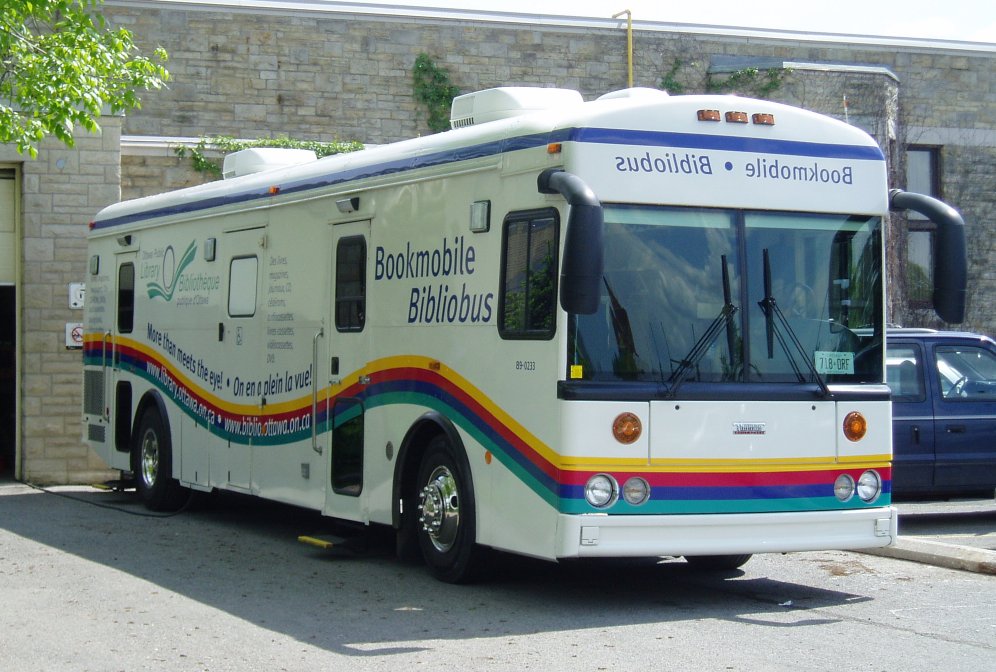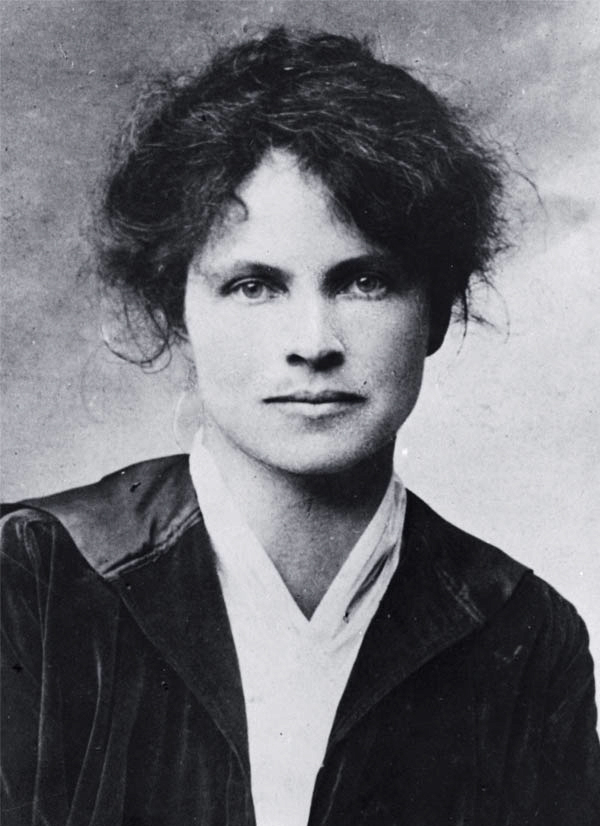|
Free Public Library Service (Vermont)
The Free Public Library Service (FPLS) was one of two state library agencies in Vermont. It was created in 1894 through an act of the State Legislature. The act mandated the creation of a state board of library commissioners, who would offer advice to existing free public libraries. The commission would also offer $100 for towns without libraries to purchase books to start a library, provided they set it up with a trained board of trustees. FPLS ran a series of regional libraries, maintained a union catalog, and provided for bookmobile and interlibrary loan services in the state between 1894 and 1970. It also oversaw the Dorothy Canfield Fisher Children's Book Award and provided library services to individuals with print disabilities. It merged with the State Library to become the Department of Libraries on March 31, 1970. Bookmobile service FPLS began Vermont's first "book-wagon" service in 1922 funded by the state Federation of Women's Clubs. It delivered book and other mate ... [...More Info...] [...Related Items...] OR: [Wikipedia] [Google] [Baidu] |
Vermont Department Of Libraries
The Vermont Department of Libraries Is the official state library agency of Vermont located in Barre, Vermont. It is a department under Vermont's Agency of Administration. History The State Library came into existence in 1825 when Robert Pierpoint a member of the Council of Censors introduced a resolution for the state to appoint a person to take care of the state's collection of books and public documents. The library was originally only for public documents, legal books and publications for the Supreme Court and legislature. In 1854 the State Librarian received a $200 appropriation to buy books of his choosing. Until 1969 the state had two library agencies: the State Library, and the Free Public Library Service which ran a series of regional libraries and a bookmobile service. The two units were merged into the Department of Libraries on March 31,1970. The State Librarian is appointed by the Governor. The State Librarian is advised by a Board of Libraries, the seven members of ... [...More Info...] [...Related Items...] OR: [Wikipedia] [Google] [Baidu] |
State Of Vermont
Vermont () is a state in the northeast New England region of the United States. Vermont is bordered by the states of Massachusetts to the south, New Hampshire to the east, and New York to the west, and the Canadian province of Quebec to the north. Admitted to the union in 1791 as the 14th state, it is the only state in New England not bordered by the Atlantic Ocean. According to the 2020 U.S. census, the state has a population of 643,503, ranking it the second least-populated in the U.S. after Wyoming. It is also the nation's sixth-smallest state in area. The state's capital Montpelier is the least-populous state capital in the U.S., while its most-populous city, Burlington, is the least-populous to be a state's largest. For some 12,000 years, indigenous peoples have inhabited this area. The competitive tribes of the Algonquian-speaking Abenaki and Iroquoian-speaking Mohawk were active in the area at the time of European encounter. During the 17th century, French colon ... [...More Info...] [...Related Items...] OR: [Wikipedia] [Google] [Baidu] |
Vermont
Vermont () is a state in the northeast New England region of the United States. Vermont is bordered by the states of Massachusetts to the south, New Hampshire to the east, and New York to the west, and the Canadian province of Quebec to the north. Admitted to the union in 1791 as the 14th state, it is the only state in New England not bordered by the Atlantic Ocean. According to the 2020 U.S. census, the state has a population of 643,503, ranking it the second least-populated in the U.S. after Wyoming. It is also the nation's sixth-smallest state in area. The state's capital Montpelier is the least-populous state capital in the U.S., while its most-populous city, Burlington, is the least-populous to be a state's largest. For some 12,000 years, indigenous peoples have inhabited this area. The competitive tribes of the Algonquian-speaking Abenaki and Iroquoian-speaking Mohawk were active in the area at the time of European encounter. During the 17th century, Fr ... [...More Info...] [...Related Items...] OR: [Wikipedia] [Google] [Baidu] |
Union Catalog
A union catalog is a combined library catalog describing the collections of a number of libraries. Union catalogs have been created in a range of media, including book format, microform, cards and more recently, networked electronic databases. Print union catalogs are typically arranged by title, author or subject (often employing a controlled vocabulary); electronic versions typically support keyword and Boolean queries. Union catalogs are useful to librarians, as they assist in locating and requesting materials from other libraries through interlibrary loan service. They also allow researchers to search through collections to which they would not otherwise have access, such as manuscript collections. The largest union catalog ever printed is the American '' National Union Catalog Pre-1956 Imprints'' (NUC), completed in 1981. This achievement has since been superseded by the creation of union catalogs in the form of electronic databases, of which the largest is OCLC's WorldCat. ... [...More Info...] [...Related Items...] OR: [Wikipedia] [Google] [Baidu] |
Bookmobile
A bookmobile or mobile library is a vehicle designed for use as a library. They have been known by many names throughout history, including traveling library, library wagon, book wagon, book truck, library-on-wheels, and book auto service. Bookmobiles expand the reach of traditional libraries by transporting books to potential readers, providing library services to people in otherwise underserved locations (such as remote areas) and/or circumstances (such as residents of retirement homes). Bookmobile services and materials (such as Internet access, large print books, and audiobooks), may be customized for the locations and populations served. Bookmobiles have been based on various means of conveyance, including bicycles, carts, motor vehicles, trains, watercraft, and wagons, as well as camels, donkeys, elephants, horses, and mules. History 19th century In the United States of America, The American School Library (1839) was a traveling frontier library published by Harper & Bro ... [...More Info...] [...Related Items...] OR: [Wikipedia] [Google] [Baidu] |
Interlibrary Loan
Interlibrary loan (abbreviated ILL, and sometimes called interloan, interlending, document delivery, document supply, or interlibrary services, abbreviated ILS) is a service where patrons of one library can borrow materials and receive photocopies of documents that are owned by another library. The user makes a request with a library, which identifies libraries with the desired item, places the request, receives the item, gives it to the user, and arranges for its return. In some cases, fees accompany interlibrary loan services. Procedures and methods A borrowing library sends, on behalf of its patron, a borrowing request to an owning library for original, photocopy, or scan materials. The owning library sends materials to the borrowing library or supplies a reason for why the request cannot be filled. Interlibrary loan and resource sharing have a variety of systems and workflows, often based on the scale of service, regional networks, and library systems. Processes are automate ... [...More Info...] [...Related Items...] OR: [Wikipedia] [Google] [Baidu] |
Dorothy Canfield Fisher Children's Book Award
The Vermont Golden Dome Book Award (formerly the Dorothy Canfield Fisher Children's Book Award) annually recognizes one new American children's book selected by the vote of Vermont schoolchildren. It was inaugurated in 1957. The award is co-sponsored by the Vermont State PTA and the Vermont Department of Libraries and was originally named after the Vermont writer Dorothy Canfield Fisher. In 2020, it was temporarily renamed the "VT Middle-Grade Book Award" before schoolchildren voted to officially call it the "Vermont Golden Dome Book Award". Selection process and award Each spring a committee of eight adults selects a "Master List" of thirty books first published during the previous calendar year. The list is announced at the annual Dorothy Canfield Fisher Conference, usually in May, and is available at Vermont school and public libraries for children who wish to participate over the next eleven months. The following spring, those children who have read at least five of the thi ... [...More Info...] [...Related Items...] OR: [Wikipedia] [Google] [Baidu] |
Federation Of Women's Clubs
The General Federation of Women's Clubs (GFWC), founded in 1890 during the Progressive Movement, is a federation of over 3,000 women's clubs in the United States which promote civic improvements through volunteer service. Many of its activities and service projects are done independently by local clubs through their communities or GFWC's national partnerships. GFWC maintains nearly 70,000 members throughout the United States and internationally. GFWC remains one of the world's largest and oldest nonpartisan, nondenominational, women's volunteer service organizations. The GFWC headquarters is located in Washington, D.C. History The GFWC was founded by Jane Cunningham Croly, a leading New York journalist. In 1868 she helped found the Sorosis club for professional women. It was the model for the nationwide GFWC in 1890. In 1889 Mrs. Croly organized a conference in New York that brought together delegates from 61 women's clubs. The women formed a permanent organization in 1 ... [...More Info...] [...Related Items...] OR: [Wikipedia] [Google] [Baidu] |
Library Services Act
The Library Services Act (LSA) was passed by the U.S. Congress in 1956. Its purpose was to promote the development of Public library, public libraries in rural areas through federal funding. It was passed by the 84th United States Congress as the H.R. 2840 bill, which the 34th President of the United States Dwight D. Eisenhower signed into law on June 19, 1956. Julia Wright Merrill, Secretary of the Public Library Extension Committee of the American Library Association, was instrumental in the legislative process. To receive funding, states needed to submit a plan to the Commissioner of Education that demonstrated how the funds would be used, whether for library personnel, books, or equipment. Thus, making state and local governments prioritize the improvement of their libraries while also establishing their own initiatives and objectives. Since federal government was not favorably looked upon at the time, the law stated multiple times the state’s authority regarding any decisi ... [...More Info...] [...Related Items...] OR: [Wikipedia] [Google] [Baidu] |

.jpg)

.jpg)